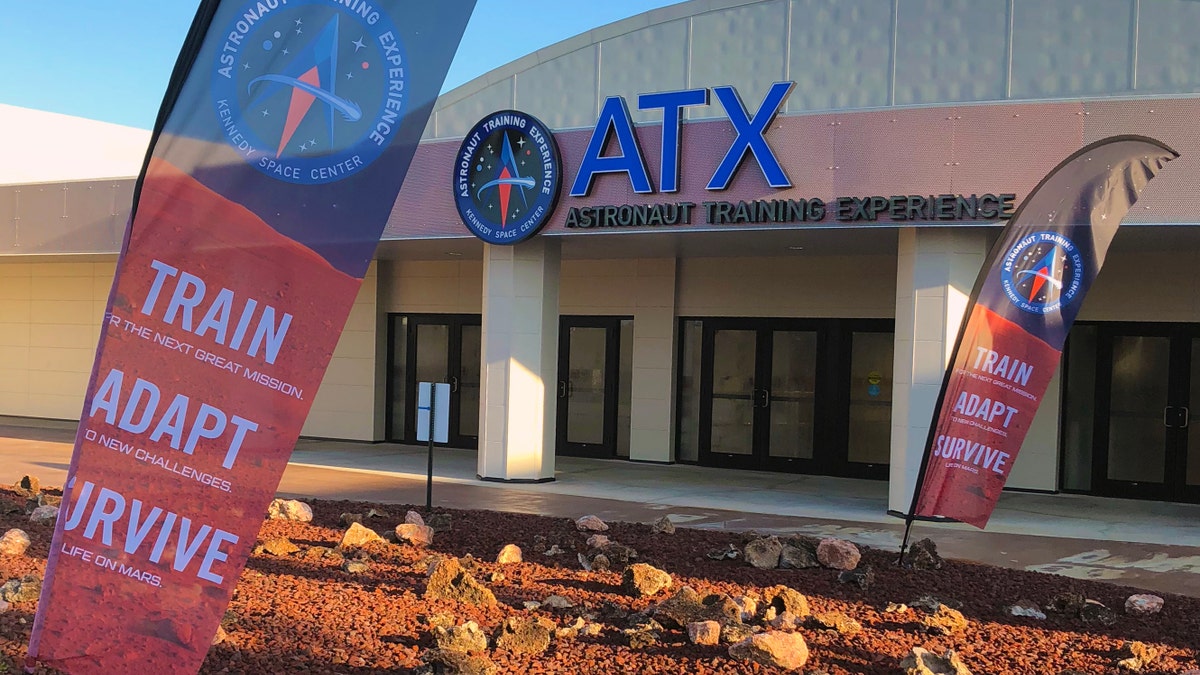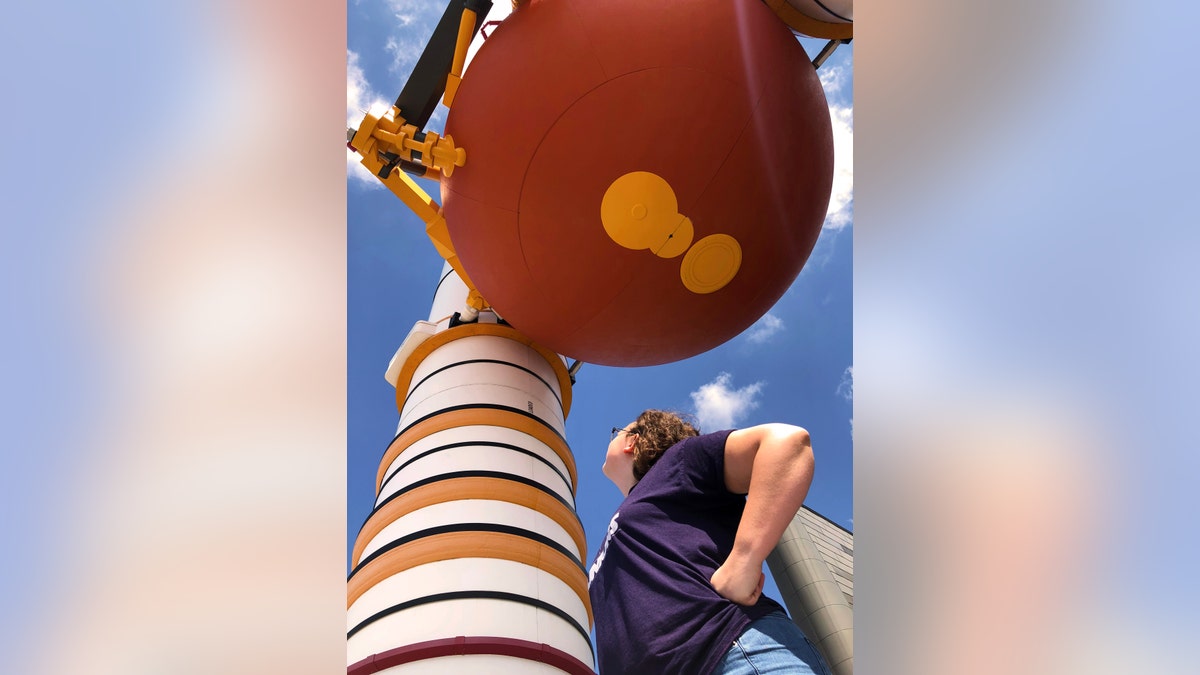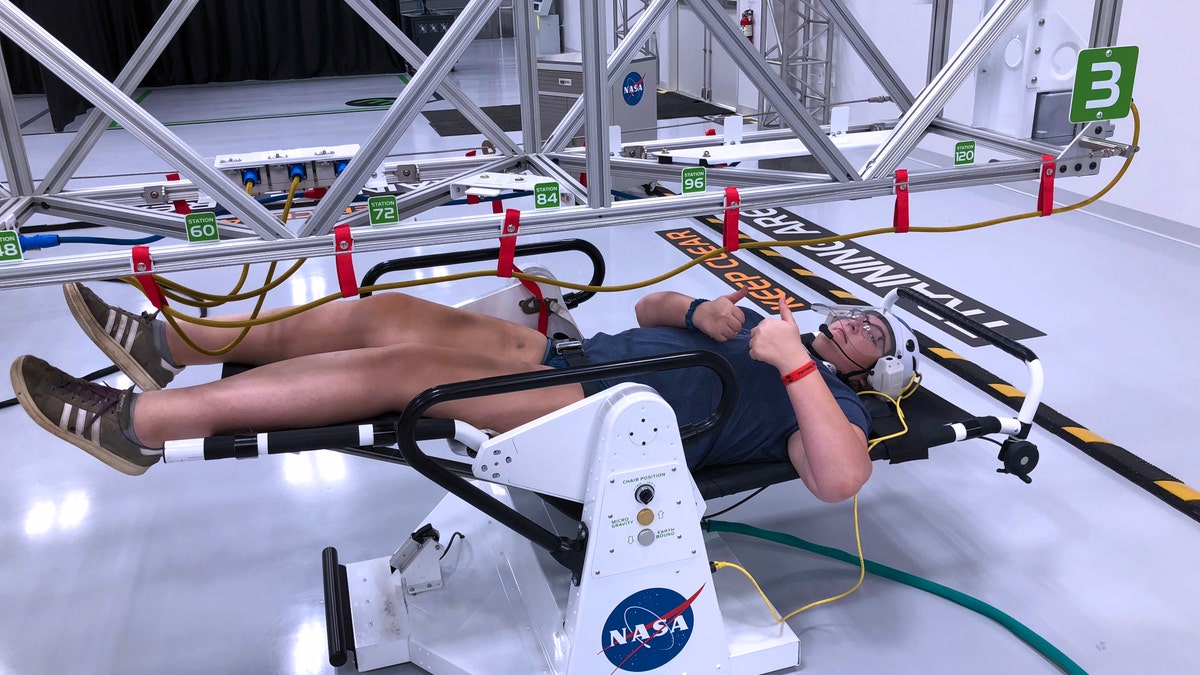NASA successfully tests the Orion spacecraft's launch abort system
Raw video: NASA performs key test in preparation for future manned-missions to the moon with a successful test of the Orion spacecraft's launch abort system from the Space Launch Complex 46 at Cape Canaveral Air Force Station in Florida.
As we celebrate the 50th anniversary of Apollo 11, the first manned mission to land on the Moon, Florida’s Kennedy Space Center has opened up its Astronaut Training Experience to the public.
For anyone with childhood dreams of going to space, this high-tech, interactive exhibit at America’s spaceport gives a glimpse of what it takes to train like an astronaut. Kennedy Space Center recently asked if we had the “right stuff” to get through the Astronaut Training Experience (ATX). Continue reading for a first-hand account of this stellar experience.
ATX

Entrance to the Astronaut Training Experience at Kennedy Space Center. (photo by Dave Parfitt)
ATX is not a leisurely vacation experience. Arrival at Kennedy Space Center was set promptly at 0800 hours, and recruits on this morning came from all over the world. We met families visiting from Chile, Poland, Russia, and … Florida. The quartermaster quickly distributed required gear (ATX t-shirt), and we gathered for coffee and snacks in the mess hall to get to know other members of our team. First assignment? Head to the launch control center.
KENNEDY SPACE CENTER

Eyes towards the heavens at Kennedy Space Center. (Photo by Dave Parfitt)
Half of the team made up Mission Control, and the other half formed the Capsule Crew. We were assigned to the capsule crew: my 17 -year old daughter, Commander; myself, Flight Engineer. Strap in, the countdown was on – 3… 2… 1… liftoff. Mission Control jettisoned us off to Mars. Our capsule shimmied and shook off the launch pad and lurched during rocket separation. Each person had specific roles to fulfill in order to dock with the International Space Station, and success was certainly not guaranteed. Fortunately, our Capsule Crew worked in concert with Mission Control to reach the space station where we “rested” prior to the long-distance flight to Mars.
APOLLO 11'S MICHAEL COLLINS REFLECTS ON HISTORIC MOON LANDING: 'WE WERE JUST REGULAR ASTRONAUTS'
COMMANDER

“Ladies and gentlemen, your 17-year-old flight commander.” (Photo by Dave Parfitt)
After the mission launch simulation, it was time for a series of exercises to prepare for duties in space and on Mars. These high-tech exercises utilized the same NASA equipment as astronaut trainees and guests could compare progress with NASA interns as well as Hall Of Fame astronauts.
We learned a large part of any astronaut training was team collaboration. During microgravity spacewalk training, one person sat in the microgravity chair, another directed them remotely through a headset, and the third handed tools to the spacewalker. After completion, the group rotated so everyone experienced each part of the exercise. The microgravity chair floated over the ground like a puck on an air hockey table, and the astronaut recruit maneuvered under a truss fixing various components without “floating off into space.” My daughter and I were teamed with a competitive woman from New York City, and we whizzed through the exercise faster than any of the other recruits. She was determined to demonstrate to her husband that she was the more qualified astronaut trainee.
MICROGRAVITY

Microgravity "space walk" during the astronaut training experience at Kennedy Space Center. (Photo by Dave Parfitt)
Next, time for a stroll on the surface of Mars. One team member strapped on a sophisticated virtual reality headset grabbed two handheld controllers, and was guided remotely through a task on “Mars.” The experience was so immersive, you couldn’t help but react and jump to what was happening around you. Rocks moved, doors opened, and dust storms blinded you – if NASA could have somehow changed our weight perception, we certainly would have believed we were walking on the face of the Red Planet.
SPACE WALK

Virtual Reality walk on Mars during the astronaut training experience at Kennedy Space Center. (Photo by Dave Parfitt)
Our final station was the Mars Lander/Rover simulator. “Easy or hard?” The instructor asked. “You flip upside down 4-5 times on the hard setting,” she said. Without hesitation, my daughter exclaimed “HARD!” We were tasked with landing on the surface of Mars and then driving in the Rover to Mars Base 1. We came in hard on the landing and tumbled like a wind-blown grocery bag across the surface, and the simulator shared every bump and roll. The Rover driving didn’t fare much better as we ended up with a shattered windshield. All-and-all, not the best showing of our three training stations.
WATCH NASA LAUNCH ITS ORION MOON CAPSULE ATOP A MISSILE IN SPECTACULAR SAFETY TEST
Following the individual training exercises, all recruits gathered for a de-briefing and informational session about the International Space Station. All guides and instructors were incredibly knowledgeable and passionate about space, and gladly answered all of our questions. It was a highly educational experience filled with realistic science and engineering applications that seamlessly blended virtual reality with physical experiences.
NASA SIMULATOR

One of the two, 2-person Mars Lander/Rover simulators at Kennedy Space Center’s astronaut training experience. (Photo by Dave Parfitt)
Following our rigorous day of training, we ate, drank, and relaxed just like those original astronauts during the space race. We headed to the Tiki Bar at the venerable Cocoa Beach Pier (built in 1962) that offered views of those historic Apollo launches 50 years ago.
CLICK HERE TO GET THE FOX NEWS APP
COCOA BEACH PIER

Drinks and sunset at Cocoa Beach Pier following a long day of astronaut training. (Photo by Dave Parfitt)
The Astronaut Training Experience is located within the Kennedy Space Center Visitor Complex, but costs separate from regular admission and tour prices. The 5-hour Astronaut Training Program is only offered on select days and costs $175/person. The minimum age is 10 years old, and those 10-17 require a paying, participating adult to accompany them. You do not need to purchase admission to Kennedy Space Center Visitor Complex for this experience. It’s a great half-day activity especially for those that have already toured Kennedy Space Center or have a limited time on a cruise docked at Port Canaveral.





















